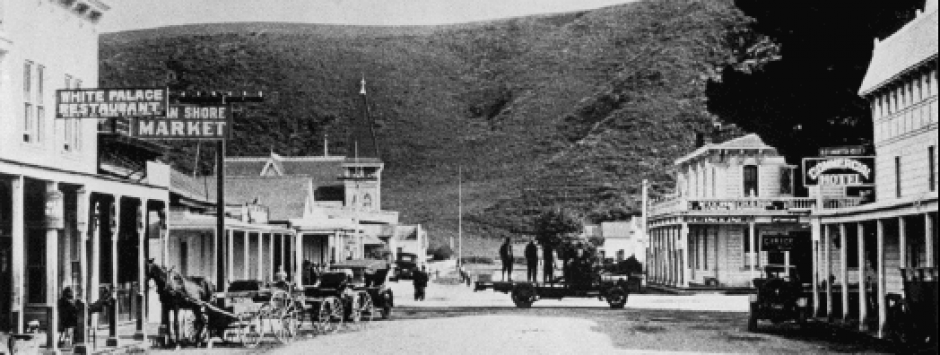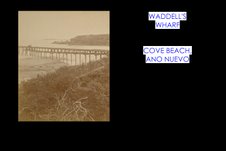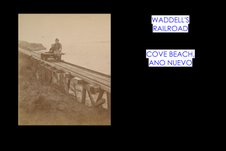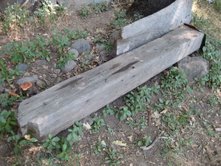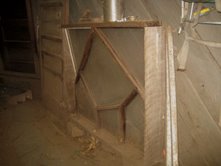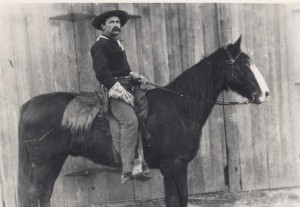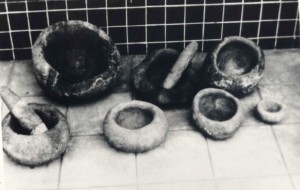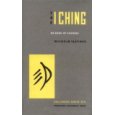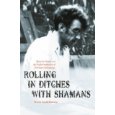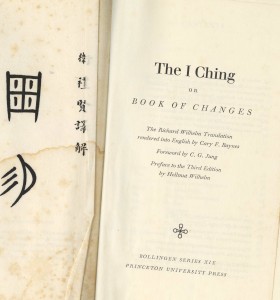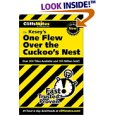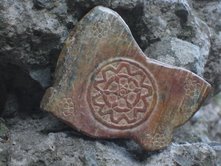Meta
Recent Comments
- Dave Olson on About June Morrall
- Gerd Gunkel on About June Morrall
- Ed Holloway on About June Morrall
Categories
- "Mountain" Mike Merritt (6)
- "The Loop" (1)
- A La California: Sketches of Life in the Golden State (3)
- Acid Beach (5)
- Alexander Moore (1)
- AM Parker (2)
- AMB Beach (3)
- Angelo Misthos (5)
- Ano Nuevo (22)
- Ano Nuevo Island (1)
- Ano Nuevo lighthouse (1)
- Arches (3)
- Ashaleigh Parker (2)
- Atlantis Rising (1)
- Bathhouse Rock (1)
- Beach Clean-Up (2)
- Bean Hollow (2)
- Beat Museum (1)
- Bideawee (1)
- Bob Dougherty (1)
- Bobbi Ballard Pimentel (2)
- Buoys (1)
- Burney J. Le Boeuf (1)
- Burt Blumert (1)
- California Coastal Records Project (1)
- California Newspaper Project (1)
- California State Auto Association (1)
- Carrier Pigeon Point (2)
- Cascade Ranch Dairy (2)
- Charles Clark (1)
- Charles F. Humphrey (1)
- Charles Jones (1)
- Charles Swanton (1)
- Chicken's Roost (1)
- clusters (2)
- Coast Survey Maps (1)
- Coastside Arches (2)
- Coastside Beaches (1)
- Coastside Caves (1)
- Coastside Secret Beaches (5)
- Coastside Waterfalls (1)
- Coburn Mystery (14)
- Coburn Troley Co. (1)
- Colombia (4)
- Colonel Albert S. Evans (4)
- Colonel Zig Zag (1)
- Connie Morgan (1)
- Coya British Bark (1)
- Dan Mosier (1)
- Daniel Boone (1)
- Daniel Durigan (1)
- Dave Cline (1)
- Dave Holleman (1)
- Davenport (2)
- David Gremard Romero (1)
- Downey Harvey (1)
- Dr. Alan Brown (2)
- Dr. Carl Djerassi (1)
- Dr. Isaac Goodspeed (1)
- Dr. W. J. Marsh (1)
- Duarte's Tavern (1)
- Eadweard Muybridge (1)
- Edward Mullen (2)
- Eli D. Moore (2)
- Ezra Pound (1)
- Fireman Collins (1)
- Forget-Me-Not Barkentine (1)
- Fourth of July (1)
- Franklin Point (2)
- Fremont Older (1)
- Friends of the Calamari (1)
- Galen Wolf (1)
- Gary Gates & Friends (1)
- Gazos Creek (6)
- Geocaching (1)
- Ghost Net (1)
- Giant Limpets (1)
- gooseneck barnacles (1)
- Gordon's Chute (3)
- Guadalupe Fur Seal (1)
- Harvey Mowry (3)
- Hellespoint Shipwreck (1)
- Hen Frigates (2)
- Henry Blomquist (1)
- Henry Cowell (1)
- Historic Bottles (1)
- Hole in the Wall (2)
- Holes in Pescadero (1)
- Ida J. Steele (1)
- Invisible Beach (12)
- Isaac Graham (1)
- J. W.Seaver (1)
- Jan "the beeman" Snyder (1)
- Jane Schlager (1)
- Janet Creelman (1)
- Jerry Cimino (1)
- Jim Denevan (1)
- Jo Lysowsky (1)
- Joan Druett (2)
- JoAnn Semones (2)
- Joaquin Miller (1)
- Joel Bratman (2)
- John McCormick (1)
- John Morrall (1)
- John Schamle (1)
- John Vonderlin (171)
- Jon Boxerman (1)
- Josiah P. Ames (1)
- Judge Horace Templeton (1)
- Judge James T. O'Keefe (1)
- June Morrall (6)
- Kathy Duarte (1)
- Ken Fisher (1)
- Ken Kesey (6)
- Kings Mountain (1)
- Kristina Schmale (1)
- La Honda (6)
- Lake Lucerne (1)
- Larry (1)
- Larry Fitterer (8)
- Larry Witham (1)
- Laura Wall Taylor (1)
- Leah Lubin (1)
- Lemuel Coburn (1)
- Levy Brothers (7)
- Linda Wyatt Iacono (1)
- Lizzie McCormick (4)
- Lobitos (2)
- Loma Mar (1)
- Loren Coburn (3)
- Lou Denny Wayne (2)
- Mammoth Rocks (1)
- Manuel Chorro (1)
- Marty McCormick (1)
- Mary Florey (1)
- Merrill Bickford (2)
- Message in a bottle (1)
- Michael Bowen (1)
- Michael Head (1)
- Mike Merritt (2)
- Minot Judson (1)
- Molly Ramolla (1)
- Monty Parker (8)
- Myrtle Garavanta (1)
- Mystic Cowboy (1)
- Neal Cassady (1)
- Neptune's Vomitorium (6)
- Notrocks (1)
- Nunziati Dam (1)
- Ocean Shore Railroad (7)
- Oil (4)
- Omar N. Steele (3)
- Orril Fluharty (4)
- Orrin Brown (1)
- Outstandinginthefield (1)
- Pacific City/Coyote Point (1)
- Pacific Mail Carrier Peru (1)
- Palmer Gulch Trestle (1)
- Pebble Beach Hotel (2)
- Pebble Beach Poetry (1)
- Pescadero (26)
- Pescadero Architecture (3)
- Pescadero Hgh School (1)
- Pescadero Historical Society (2)
- Pescadero Oral History Project (1)
- Pescadero Trivia (1)
- Pescadero's Pebble Beach Hotel (3)
- Pigeon Point (3)
- Pigeon Point Lighthouse (13)
- Place Names of San Mateo County (2)
- Pomponio (2)
- Pomponio Creek (1)
- Princeton-by-the-Sea (1)
- Prohibition (6)
- Purisima Falls (2)
- Purple People Eaters (1)
- Pyramids (2)
- Ralph E. Wall (1)
- Redwood Trees (2)
- Rennesselear Steele (1)
- Richard Ledford (2)
- Rob Tillitz (2)
- Robin Caldwell (3)
- Ron Duarte (2)
- Russell Towle (23)
- Samuel Bean (1)
- San Francisco Call (1)
- San Gregorio (3)
- San Juan (3)
- San Mateo County History Museum (1)
- Sarah Coburn (1)
- Sarah Swanton (1)
- Sawmills (1)
- Sea Monster (1)
- Sea Serpents (1)
- Shawn Mann (1)
- Sheri Martinelli (2)
- Sir John Franklin (1)
- Smuggler's Cove (1)
- Snails (1)
- South Coast beaches (6)
- South Coast Brick (1)
- South Coast Tunnels (4)
- Spaulding Corner (1)
- SS Fremont (1)
- Stacy Trevenon (1)
- Steele Family (6)
- Storm 1998 (1)
- Susan Friedman (3)
- Swanton House (1)
- Tafoni (1)
- Tarballs (1)
- Terry Adams (3)
- Tess Black (3)
- The Butano (7)
- The Contender (4)
- The Gazos (1)
- The Notch (1)
- The Pollocks (1)
- The Quest (3)
- The Seven Sisters (1)
- The Wrack (2)
- Thomas Butwell (1)
- Tires (2)
- Tom Butwell (1)
- Torquay (2)
- Trefiret Beach (1)
- Tunitas Creek (9)
- Uncategorized (412)
- Upenuf Road (1)
- Vanishing Beaches (1)
- Vulcan's Donut (1)
- Wadell Beach Bypass (1)
- Warm Water Lagoon (4)
- Whale Fall (1)
- Whale Watching (1)
- whaling (2)
- William Steele (1)
- Willowside Dairy (2)
- WJ Savage (1)
- Worm Farm (2)
- WWII Coastside (2)
See Virtual Ano Nuevo
Virtual Ano Nuevo, Virtual Parks
Story by John Vonderlin
email John ([email protected])
Panorama of Ano Nuevo’s Middle Beach, click here
Hi Russell,
I don’t know what kind of speed connection this site whose URL is below needs, but if you can access it I think you’ll be amazed. The site has a map of Ano Nuevo Park showing where various panoramic series were shot. Each panorama consists of twelve shots over 360 degrees. By using your mouse as directed you can spin the displayed view completely around in a circle, zooming in or out using the Shift or Control key. The one near where Cascade Creek goes into the ocean has a great long shot of the “Forbidden Zone,” down the beach. And the Preserve Boundary shows it up close. This is the next best thing to actual being there. And considering how cold, wet and windy I’ve seen it there, it might be better then sometimes. Enjoy. John
Posted in Uncategorized
Comments Off on See Virtual Ano Nuevo
Vonderlin-Towle Q & A…..Ano Nuevo’s Forbidden Zone
John Vonderlin-Russell Towle Q&A
email John ([email protected])
email Russell ([email protected])
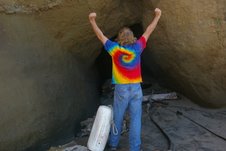 John Vonderlin (JV): Thanks, Russell, for the answers to my questions. As I thought, your cabin was in the heart of the “Forbidden Zone.” When I look at the 1972 pictures of the ranch I can’t help but think of a wondrous Hippy Heaven. Of course the pictures don’t show the thorn in Paradise, the unrelenting wind and frequent foggy cold weather. I couldn’t help but notice how big the body of water on the ranch was in 1972 when compared with the 2005 picture (#200506666) Was there a small impoundment on the creek? Is that White House Creek? (the caption says White Horse Creek on …6665. I assume that’s wrong.)
John Vonderlin (JV): Thanks, Russell, for the answers to my questions. As I thought, your cabin was in the heart of the “Forbidden Zone.” When I look at the 1972 pictures of the ranch I can’t help but think of a wondrous Hippy Heaven. Of course the pictures don’t show the thorn in Paradise, the unrelenting wind and frequent foggy cold weather. I couldn’t help but notice how big the body of water on the ranch was in 1972 when compared with the 2005 picture (#200506666) Was there a small impoundment on the creek? Is that White House Creek? (the caption says White Horse Creek on …6665. I assume that’s wrong.)
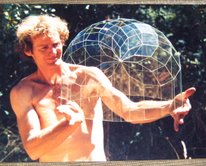 Russell Towle (RT): Green Oaks Creek. The road in to J&M’s climbs over the dam. In one or more of the pictures you can see the deep steely blue the lake takes on with its waters ruffled by that pesky NW wind.
Russell Towle (RT): Green Oaks Creek. The road in to J&M’s climbs over the dam. In one or more of the pictures you can see the deep steely blue the lake takes on with its waters ruffled by that pesky NW wind.
JV: The CCRP picture you sent with numbers really helped me recall the area. It was probably not far from where your cabin had been that I found the most unusual float in my collection (about 500) It was a semi-waterlogged two foot in diameter macramed rope bag containing buoyant material. It had a beautiful colony of 4 inch long Gooseneck Barnacles. It truly was a denizen of the Gyre, (North Pacific Sub-tropical Gyre) blown eastward from its travels by weeks long westerlies. Well worth carrying the more then a mile
out the Cascade Creek trail to Highway 1 even though its water-soaked weight was close to a hundred pounds and it was moderately slimy and stinky. Unfortunately, it has been several years since the Gyre has
delivered the quantities of wonders that it did that year.
RT: You are quite the collector!
JV: Did you look at the 1972 picture (7219022) just north of the one you put the numbers on? It shows the just inshore dune area from a different angle. It may be wishful thinking but I swear I see building or at least a roof line at the spot you indicated. The other cabin just south of yours seems clearer too. On the CCRP website they explain the origin of the 1972 and
RT: No, I did not look at the more northerly photo. If anything shows it would be the *second* location of my cabin. The first location was on a little bluff of marine terrace seds stained red, showing that they had been uplifted above sea level fairly long ago, and had been near the land surface for a goodly time. That degree and color of iron oxidation is significant.
The little red bluff was maybe ten feet above mean sea level. In December 1969 I went there to clean it out before moving in (it had been built the previous summer by some artist friend of Merrill’s if I recall). There had been a major winter storm raging for a week. I was rather amazed to see the ocean essentially at the level of the cabin, with waves crashing against the seaward side, and sweeping all the way around on the landward side, and pouring in the door. I was going to live there? It took a while before I realized it was that unique combination of a sustained powerful storm *and* the annual highest tides, which occur around New Year. Perihelion combined with a full moon or a new moon, if I recall. But add an unusually powerful storm
and you have an ocean which will effect incredible erosion.
JV: 1979 photos. The original slides were lost, but somebody found copies in storage a few years ago. There is a tab on the CCRP Home page that explains how they restored them, and integrated them into the newer collections, but little more. It is possible they weren’t even shot in 1972. Is there anything in the pictures that would help you date them.
RT: Well. Maybe there is. You see, in the supposedly 1972 photo you can see a camp trailer thing parked by J&M’s house. That would be Merrill’s brother’s trailer. But I can’t remember when he left. Then there is the pickup truck with its camper shell. That could be Ken’s truck. He was an older hippie who camped here there and everywhere. He may have arrived in 1972 but I can’t recall. The Tower is gone and I think it came down in 1971. And I think we do see Pete Moss’s Second Cabin, such a work of art, built in 1971. Hmm. There is a funny rectangular thing down by where J&M’s road finally hit the beach. You couldn’t drive the last bit, at least, we never did. I think that rectangular thing is the roof of a beach sauna. We used to heat up rocks in a big bonfire and carry them inside in wire baskets. Heck back in 1969 we had several raku open-air firings of pottery right on that beach, pottery made form the very beds of clay exposed in the winter.
Everything in the photo seems OK for 1972 to me.
JV: In regards to your timber. The placard at the Interpretive Center says the barns were built in the 1880s using timbers salvaged from a local wharf. The “local”est definitely would have been Waddell’s Wharf. I think your timber has an interesting history you might want to know. Here’s a little excerpt I grabbed from the Internet from a hiking blog about the wharf and the southern “cheapskate” entrance.
” Last week we hiked to Waddell’s Mill in Big Basin State Park. I mentioned that Waddell’s cut timber had to be hauled on mule-drawn carts over wooden rails through the canyon to the coast for shipping. Waddell’s plans for a wharf at the mouth of Waddell Creek were foiled by bedrock that made it impossible to drive piles for the wharf. His solution was to extend the rail line north to a wide cove on Point Ano Nuevo, from which he built a long pier to deep water.
“This week’s hike takes us to that cove from the south–or informal—entrance to Ano Nuevo State Reserve. The trailhead is located one-half mile south of the reserve entrance road. Watch on the west side of Highway 1 for a brown painted gate that stops vehicle traffic. Just beyond is an off-road dirt parking area for a dozen or more cars. Pass around the gate and walk on the old asphalt road, which is the old Highway 1. Take care to stay away from the poison oak that lines both sides of the road. In a block or so the path turns north, and you can see the large cove and expanse of Point Ano Nuevo ahead. The path crosses an old concrete bridge that spans Ano Nuevo Creek deep below. The width of this bridge indicates that it is for one-way traffic only or that vehicles using it were very, very narrow.
“Cross over the bridge to a trail junction. Straight ahead and up will bring you to the Visitors Center, but turn left down to the wide beach. Along the water’s edge, you will sense that this sheltered area behind the bluff was probably the ideal place for Waddell to build his wharf. Old photos show the wharf placed around the area where a clump of trees lines the bluff. From there, the wharf extended 700 feet over the beach to deep water. At the end was a swinging chute that lowered lumber to a schooner below. The wharf was completed in 1864, and according to Stanger, was handling two million feet of lumber a year by 1867. Other mills along the coast also shipped from the wharf.”
This is the last we hear about William Waddell. In 1875 he was mauled by a grizzly bear while hunting deer with his friend John Bradley and died of complications soon after.
I’m attaching old photos of the Wharf and the railroad the blogger above mentioned . They are parts of
Muybridge stereographs. I think I have a picture I took of the rough-hewn appearance of the beams in the barn. I’ll reduce it and send it if you want to compare them. How small a file do you need? Are the ones I attached too cumbersome?
Past midnight, gotta get ready for tomorrow’s struggles. Enjoy. John.
RT: Hmmm. I don’t think I ever heard of the Waddell Wharf. Interesting. The “broad beach” is part of the Coastways Ranch mile of beach which Hank Bradley used to patrol daily in his jeep. If he saw anybody on the beach *above* the mean high tide line he would stop and have them sign a form explicitly stating that they used the beach with permission from Coastways. This would protect the value of the beach when the Park would eventually buy it, or so Hank thought.
My sense of the barn timbers I have is that they were hewn from local sources. I would be amazed if they had been salvaged from the wharf. If the wharf was for a lumbering operation, then why use hand-hewn
timbers in it at all? More sense to saw your 12X12’s at the mill and run them down to the wharf site on your railroad. Senseless to hew timbers of you have a mill. And my timbers are hand-hewn all the way.
We have a lot of old logging railroad roadbeds around here from the 1870s to the 1920s. The older ones will sometimes still have a few ties lying about. These were all narrow-gauge railroads. And what few old ties I have seen were hand-split, not even hewn to speak of, just split, Incense Cedar. So I should not argue that just because a logging railroad goes to such-and-such a place, only sawn tiber would ever be used, because I have seen for myself that hand-split cedar ties were used.
Very interesting stuff, John. I love history.
Posted in Uncategorized
Comments Off on Vonderlin-Towle Q & A…..Ano Nuevo’s Forbidden Zone
Memories of Ano Nuevo: A Timber, Glass Float…and a window from the lighthouse
Story & Photos by Russell Towle
email Russell ([email protected])
John, June, an example of one of my hewn timbers from Green Oaks Creek (one end still has its tenon); a picture of my Año Nuevo Lighthouse window, made in 1971 for a little cabin I lived in in Grass Valley, now just leaning against my back wall and gathering dust; and a picture of my one “Japanese” glass fishing float, near a chunk of fossiliferous Pliocene siltstone from south of the Point on the old Coastways Ranch beach, where one can see lenses of shells in the brown siltstone of the cliffs. Hank Bradley always used to joke that those lenses of shell fragments must surely be in the way of being coprolites, masses of whale shit as it were.
R
Posted in Ano Nuevo, Russell Towle
Comments Off on Memories of Ano Nuevo: A Timber, Glass Float…and a window from the lighthouse
“Hot” Q & A: John Vonderlin Asks Russell Towle About Mysterious Ano Nuevo…
 John Vonderlin (JV): Last year while searching for the WWII observation tunnel the Pranksters were “trapped” in during the Good Friday Earthquake’s tsunami in 1964, I found the Graffitti Grotto, a sea cave, where Zane had carved his initials decades ago and informed him of its location. He gave me a dozen exclamation points, excited to be able to share a nearly forgotten part of his youth with his son someday. I bet he knows what became of the film.
John Vonderlin (JV): Last year while searching for the WWII observation tunnel the Pranksters were “trapped” in during the Good Friday Earthquake’s tsunami in 1964, I found the Graffitti Grotto, a sea cave, where Zane had carved his initials decades ago and informed him of its location. He gave me a dozen exclamation points, excited to be able to share a nearly forgotten part of his youth with his son someday. I bet he knows what became of the film.
Russell Towle (RT): Zane Kesey sounds like maybe the best bet. I haven’t contacted him directly, not at all.
JV: Are you aware of the details of the “acquisition” of the land for the park by eminent domain? Was Stuart’s homebuilt house really destroyed after acquisition? Did the floating “island” sink in the lake or was it
disassembled? Do you know the last chapter of your driftwod home?
RT: It was not acquired by eminent domain; Janet and Merrill merely got tired of living so very remotely, tired of the eternal wind. They sold to the State Park. The floating greenhouse, well, I personally disassembled it and hauled it piece by piece up to Janet and Merrill’s new place on Pescadero Road, in 1977, I think. I think we let the old iron pipes sink into the reservoir, but everything else came out.
The driftwood cabin was clearly going to be swept out to sea, so, with Janet and Merrill’s permission, I decided to relocate it farther back in the dunes. I got about twelve people together and we were able to lift it up and carry it uphill, about twenty yards back in the dunes, where I had prepared a new spot for it. Then I decided to make it much nicer. I would attach an octagonal room to one end. I would put in curved rafters. This and that. It was already up on a pole foundation I had made, from tree trunks which had washed up on the beach. So I put a lot of work into a too-ambitious project and lived during that time in the Big House, then under construction. During the winter of 1971-72 some Boy Scouts who were camped on Cascade Ranch land, nearly a mile north, walked down and completely destroyed the cabin, and threw my tools all over the dunes, and stole my tools. I was able totrack them right back to their camp, where the adults took a haughty attitude, “Well, your residence is illegal, anyway.” True enough. There was no putting Humpty Dumpty together again.
JV: There is a new $3 million Interpretive Center that just opened at Ano Nuevo in the old Steele dairy buildings. One of the buildings has rough hewn monster timbers that a placard says were recovered from a defunct local wharf. I’m assuming that was the Waddell Wharf that had carried lumber to waiting ships in the late 1800s. Do you think your timber was also from that source? Do you have pictures of it?
RT: But how were these timbers stored, after removal from the wharf? I don’t remember a wharf at Waddell. There was one at Davenport. My timbers are mostly short, six or eight feet, they were just what was left after bulldozing and burning a barn. They are redwood and still show adze and broad-axe marks. One had an interesting carving of a human head in profile, but it has weathered away.
JV: Meg, has been doing the Beach Watch survey from south of New Year’s Creek to the county line for several years, so I have become relatively familiar with some of the areas you referred to. I think your driftwood house was in what we call “The Forbidden Zone.” While I need a good reason to ignore the signs, I have hiked along that beach a few times to “clean” it of buoys, ropes, nets, tires or any other flotsam treasure I might care to carry the long way out to Highway 1. I’ve got numerous pictures of the area I’ll email if you want to take a walk down Memory Lane.
RT: Isn’t the county line right there near the south side of Año Nuevo? I was way around the point to the north. Janet and Merrill’s Big House is now a ranger residence. I stopped in for a visit last year. They do
not allow public access into the park from that end of things.
JV: I’m assuming with a couple of years “on the frontline” you were able to observe Neptune’s rhythms intimately as far as flotsam is concerned. Your “calling” of beach treasures made me chuckle. After four years of collecting, photographing, cleaning, and sorting tens of thousands of pieces of marine debris I have come to believe through my observations that there are funny things going on in the offshore area that manifest themselves in almost magical ways on the beach. To look for a killer whale tooth in the same place you found one previously is not that illogical. Lightning often strikes in the same spot for reasons we often can only guess at. For instance, about a mile north of the Point is a minor vomitorium that occasionally kicks up non-buoyant marine debris en masse. Socks, sometimes as many as 40 at a time, show up there episodically, associated with the piling of wrack on the beach. Do you remember anything odd like that in that general area in the 70s? Did Stuart have favorite places to collect the debris he used in many of his pieces?
RT: This vomitorium would be in the little rock outcrop at the north end of our beach. Just north, yards north, of that little outcrop, is where I found my whale tooth. In those rocks were exposed whale bone
fossils, but of a lesser quality and lesser degree of fossilization than the agatized pieces we would find loose on the beach. There were other places on the Point where the soft Pliocene siltstones carried whale fossils.
You have no doubt observed that in winter, the sand gets stripped off that beach, Janet and Merrill’s beach, and the soft clays of the uplifted marine terrace are exposed, along with large masses of rounded boulders. We were conneisseurs of flotsam and jetsam, and Merrill was King so far as finding the oddest rarest things. Every day he would walk the beach slowly. He found many, many agatized whale rib fragments and vertebrae. He found quite a few Japanese fishing floats. In my years there I only found one glass float.
The patterns are definitely interesting, by which such debris is washed up.
You will know that the North Pacific Whorl or whatever it is called, from more or less permanent high pressure over the Pacific north of ~latitude 30 degrees N, causes clockwise rotation which sends things
from Japan to California via Alaska, more or less.
Was it Alexander Von Humboldt who observed Chinese junks stuck in the mud at the mouth of the Columbia River? At any rate, they were there courtesy of the Whorl.
That is, currents sweep the California coast from north to south, or northwest to southeast, to be precise.
They are driven by, and accompanied by, the almost constant northwest winds.
OK. Those winds actually sweep off warmer surface water and allow colder bottom water to well up to the surface. Hence, in part, the fog. The air is chilled below the dew point by the cold upwelling waters.
So, knowing that so far as winds and currents go, we can label every promontory with a windward side, and a lee side, what should we expect?
It is not an easy question to resolve, sin
ce the calmer waters on the lee, south sides of promontories, might well trap things.
For instance, the gold miners in the Sierra quickly found out, back in 1848 and 1849, that they should look on the *inside* of river bends, not the outside. The inside is where slightly calmer and slower waters
allow gold and all manner of sediments to drop, to stop. The inside of bends is where the “bars’ of the 49ers are found.
So after a fashion we might identify the lee sides of promontories with the insides of river bends. It is a little bit of a forced analogy but to me it makes some sense. Certainly at Año Nueov in partocular the north side, the windward side, is eroding under wave attack much much, much faster than the south side. Similarly, in our Sierra rivers, in their deep canyons, the outsides of the bends, where the water flows fast and furious, are activiely “degrading” or being eroded, while the insides of these same bends are “aggrading,” that is, more stuff added, than stuff taken away.
But in support of the idea that the northern, windward, current-ward sides of points and promontories actually collect more debris, I have heard that that huge hook of land jutting far west into the Pacific, from north-central Baja California, right by Scammon’s Lagoon, is the best driftwood, flotsam and jetsam, and old shipwreck beach on the entire Pacific coast of North America.
I have heard, but not seen for myself.
JV: I was just looking at some 1972 aerial pictures of that area and I saw about a hundred artifacts in the blurry pictures that could have been your cabin or Bigfoot’s or Pete’s. Can you help me locate where they were? Are you familiar with the California Coastal Records Project? If you go to their website http://www.californiacoastline.org/ and search for image #6376 you’ll get a 2002 photo of Point Ano Nuevo. By hitting the “NorthWest 1” button you’ll move up the coast. When you find the photo that captures about where your cabin was, you can hit the Time Comparison button. That gives you all the photos from different time series of that same area. The photos are from 72, 79, 87, 2002, 4, and 5. By double clicking the photos you get the largest file for that shot. Unfortunately, the 72 and 79 photos are not of the quality of the later ones, especially the ones from 2002 and later, taken by the Adelmans. Can you see any of the homebuilt structures in the pictures?
RT: I do not have broadband. I can put dots on the map. I’ll see what I can come up with.
JV: I’ve got many more questions about some of the things you mentioned, but I’m running down here at the end of a hard day so I’ll close. Hope to hear from you. Thanks for sharing. And congratulations on the impressive online presence you’ve created with your blog, photos, etc. Enjoy. John Vonderlin
RT: Thanks John. It sounds as though you have developed quite an intimate acquaintance with that area. More than mere acquaintance. I’d suppose very few people know it as well. It is a very special place.
Russell Towle
Email John: (benloudman@sbcglobal. net)
Email Russell ([email protected])
Posted in John Vonderlin, Russell Towle
Tagged Ano Nuevo, John Vonderlin, Russell Towle
Comments Off on “Hot” Q & A: John Vonderlin Asks Russell Towle About Mysterious Ano Nuevo…
1970s Ano Nuevo: A Mortar & Pestle in Every Garden…Story by Russell Towle
A Mortar & Pestle in Every Garden
Story by Russell Towle
Email Russell ([email protected])
June, as I had said, at one of those old ranches along the Old Stage Road, between Pescadero and San Gregorio, lived a tall thin man of great age, who had made a living hunting mountain lions. I believe his
first name was Bob.
By the way, at that time, around 1972, I regarded myself as something of a budding connoisseur of old California ranches, and they loomed large in my mind. The subject developed slowly, until I moved to Año
Nuevo, and visited all the old ranches in the area, and discussed the local history in detail with their residents. I noticed that all the old ranches had collections of Indian artifacts. Of course, I am
supposed to write, Native American, or Native Californian, but I resist change.
The most visible artifacts were mortars and pestles. It seemed every ranch must have a mortar and pestle in the flower garden nearest the front door. Perhaps several mortars, and no pestles; for the pestles go missing, being smaller, and more often than not it is just the mortars. Rounded boulders perhaps a foot or so in diameter, with a smooth deep hollow where the acorns and other seeds were ground. The California Indians were balanophages, acorn-eaters, just as our ancestors in the Europe of ten thousand years past were balanophages.
Such a mortar may represent the work of a millennium or more. The grinding of acorns for generation upon generation of people.
In subsequent years I visited old ranches in the Central Valley and Sierra Nevada foothills, and always, almost always, there were the mortars. One could guess that they were an item of pride amongst the old ranchers. By the 1890s, with the Indian population worse than decimated, there arose a golden glow of nostalgia, and boxes of peaches bore beautiful labels showing a beguiling dark-skinned lass with flowers in her hair: “Kaweah Maiden,” and ranchers discovered they must have a mortar near their front door.
One of the more fascinating Bohemians of those days was Jaime de Angulo, author of several books on the natives, such as “Indians in Overalls” and “Indian Tales.” He was a linguist, and learned quite a
number of the California languages. His wife, Cary, was the woman who translated Richard Wilhelm’s German translation of the “I Ching” into English,
hence we know it as the “Wilhelm-Baynes” translation. She had had an affair with F. Scott Fitzgerald, or D.H. Lawrence, or some such nob, in Taos, New Mexico, while married to de Angulo, and they divorced, and she, I believe, married a man named Baynes.
At any rate, Jaime de Angulo
was of the Spanish nobility, but had a lust for adventure which led him to California instead of to college, and he made a kind of living with horses in northeastern California, where he befriended the Pit River Indians. Then, having anticipated Henry Miller by a number of decades, around 1905 or so Jaime bought a ranch in Big Sur. He determined to drive a herd of horses down the length of the state, from the Pit River to Big Sur, and hired on an Indian to help.
They duly drove the horses south and arrived at the ranch in Big Sur.
Now, it had not escaped the notice of Jaime de Angulo that all the real ranchers in California had mortars in their gardens. He managed to locate a nice mortar, and placed it artfully to one side of his fireplace, on the hearth. He was proud of his mortar, as any California rancher was proud of his or her mortar or mortars.
But his Indian drover was terrified, and insisted Jaime carry it outside the house, for it was, he said, an object of great magic, very powerful, and possibly angry at having been moved to the ranch from its rightful location.
For me the lure of the old ranches was akin to the lure of natural history and geology; these things had to do with bona fide reality, whereas the world most people lived in was a bizarre fiction of freeways and suburbs and fashions and politics. The “real” world was, then, in some way, accessible, via the old ranches. And could say, all the more so, via the old Indian sites. I became an expert at recognizing these archeological sites. Here in the Sierra, for instance, if there is, say, an old apple orchard which is anywhere near a spring, well, it’s about 100% certain it is an old village site.
I would talk and talk and talk with the old-timers, opening my window upon reality. I learned at Año Nuevo about how the vegetation has changed so much, from too much logging, and from suppressing wildfires. I heard almost exactly the same eyewitness testimony from an old woman in Grass Valley, an avid equestrian, as I had heard from an old woman at Año Nuevo, also an equestrian, viz., that “when I was a girl I could get on my horse and ride anywhere, any direction, but now the brush and small trees are too thick.”
I always listened to those old-timers with intense interest.
Which brings me back to Bob, of the Such-and-Such Ranch, along Old Stage Road either north, or possibly south, of Pescadero. One fine day I was doodling slowly along on my Honda Dream, taking in every detail,
every row of trees, every field, every outbuilding, and a tall thin old man in boots, blue jeans, and a plaid shirt looked my way. I stopped to chat.
I ended up meeting with Bob several times, to listen to his stories of The Way Things Were.
One of those stories was a real classic. He had grown up in southern Oregon, where his parents were homesteaders, and they had located upon 160 acres, where they ran a few head of cattle, and grew some crops. His father was an avid hunter, and had Bob learning to use rifle and pistol almost so soon as he could walk. Every fall they would go off into the wilderness to camp and hunt. Finally, Bob turned ten, and was
deemed old enough to kill his first bear. Long long since had the deer and the grouse fallen, to his sharp young eyes and his steady aim. It was time for bear.
He and his father had just the two saddle horses and the two pack horses with them, as they weren’t going very far, nor for very long. But they went sufficiently far, and set up camp in a meadow nestled in the deep Oregon woods, at that time untouched by the logger, and the logger’s bulldozer.
They had lunch, and then his father felt like a nap. He hung his pistol upon the central tent-pole, and laid his 30.06 rifle beside his camp bed, and went right to sleep.
This left Bob alone and bored. He wandered into the woods with his rifle, and saw a bear. He aimed, he fired, he killed his first bear, and all by himself, too! The bear’s body was far too heavy to drag back to camp, but he must show off his kill to his father immediately, nothing else would do, so, young Bob unsheathed his Bowie knife and cut the head off that bear. The head alone was almost too much to carry, but he staggered back into camp, hollering about killing a bear, eagerly imagining his father bursting from the tent, so amazed, so proud, probably whooping and hollering and dancing around and everything!
But his father did not appear.
Bob put the bear head down and crept up to the tent and looked inside. His father was sound asleep. An idea formed, and to think was to act: Bob crept inside, emptied the pistol of all six bullets, picked up his
father’s rifle, and eased himself back outside.
Then it only remained to loosen a tent peg or two, and shove the bear’s head underneath the edge of the canvas, and make really loud growling and roaring sounds, while shaking the head from side to side.
He heard his father awake; reach for his rifle; curse; reach for his pistol; and then …
Click! Click! Click! Click! Click! Click!
And then …
BANG, GODDAMN IT!!!!
At which point Bob began to laugh and his father began to roar.
Such was a story I gleaned from good old Pescadero.
—————————–
Pescaderomemories.com: Mentioning the I Ching brought back memories. I have the version you speak of. I also have the coins I used to toss for the readings. I’ve been looking for them; I know they’re around here someplace.
Russell Towle: Ah the good old I Ching. I have quite a story about that. You may recall that while coins may be used to fet to a hexagram, the older method is to use yarrow stalks, something like fifty-one or fifty-two
of them, of which three are set aside at the outset, and with the rest a certain sorting process is followed, and eventually one settles upon a certain hexagram.
Well, my old friend Greg Troll and I had harvested yarrow stalks
for the I Ching and were drying them in the sun beside a dirt road high in the Santa Cruz mountains, near the 2800-foot contour as I recall, where friends had rented a couple of dilapidated old cabins. We had a regular hippie commune going on there. Anyway. It so happened a San Mateo County deputy sheriff was on a Sierra Club hike, and they walked right past our remote cabins, and he saw hippies, and he saw herbs drying beside the road, and the next day there was a major bust, and, we, those of us they caught, were whisked off to jail for growing marijuana. Oddly, we really were growing marijuana, but not where it could be seen from the road. So later, in court, many people had all charges dropped, I among them. My judge actually got up form the bench and pulled out a blackboard from the wall and drew a marijuana plant and then a yarrow plant and personally questioned the deputy about his observation. Then he dismissed charges against me. Others were not so lucky. This was in, what, 1968?
Posted in Russell Towle
Tagged Russell Towle
Comments Off on 1970s Ano Nuevo: A Mortar & Pestle in Every Garden…Story by Russell Towle
I Met Nurse Ratched Near Pescadero Creek. Story by Russell Towle
Meeting Nurse Ratched Near Pescadero Creek
Story by Russell Towle
Email Russell ([email protected])
So far as Pescadero, I lived miles on up the creek for about a year, in, I think, 1977-78. I would go down to town once in a while but can’t say I ever became a local. I remember the little roadhouse thing at Gazos. I love the old stage road running along inland through all that area. The widely-spaced old ranches. I have some stories, there was a man in one of those old ranches, thin as a rail and ninety years old, who used to be a State mountain lon trapper/hunter. He had some great stories. Then it so happened that, where I was on Pescadero Creek, well, right across the creek lived a couple, and the woman was a nurse at the psychiatric ward of the Veteran’s Hospital in Palo Alto, and she had been there a long time, and she remembered Kesey, and long story short, she was Big Nurse! One day in 1977 we had a party she attended, she had a glass or three of wine, and totally bent my ear with stories about Kesey at the hospital. She would raise her voice into a kind of shriek to better illustrate how she talked to young Kesey, young Kesey with his little notebook, jotting thingsdown: “Mr. Kesey!!! You may think you are some kind of writer, Mr. Kesey!!! You may think you are some kind of artist, Mr. Kesey!!! But you are an orderly in a psychiatric ward, Mr. Kesey! There is work to do, Mr. Kesey!! Do you see that old man, over there, carrying his laundry? Do you? Help him, Mr. Kesey!! Help him!!”
And more of that ilk.
Posted in Russell Towle
Comments Off on I Met Nurse Ratched Near Pescadero Creek. Story by Russell Towle
I have questions for Russell Towle….[Some of the material might be considered controversial.]
PescaderoMemories(PM):
What was your life with Neal Cassady like? I have his book, “The First Third;“ I remember buying it at Keplers which was near the street where you hung out in Palo Alto. Did Neal Cassady visit AN? I’ve heard about the Kesey movie…were you there when they were filming?
Russell Towle (RT):
Well. On Channing Way, in Palo Alto, in the early summer of 1966, Neal Cassady sometimes resided at the house I lived at. I was doing light shows. This house was a kind of commune with an old carriage house or
some such thing in the back yard where half a dozen more people could live. It happened that several of the Pranksters would stay in that backyard house. I didn’t interact at all with Cassady, being content to view him from a safe distance. He was given to carrying this little sledge hammer around with him, and was a regular expert at flipping it up and catching it again. Like the other Pranksters he was always stoned. So was I, but those guys were into methedrine, heavy into methedrine. If Neal Cassady spoke it seemed always to be in a flurry of words, from which one, with luck, might extract certain images or even feelings. I remember hanging around him at what passed for an acid test in Palo Alto, some weird auditorium full of echoes, some
music, too loud, and several young men and I encircled Cassady, enraptured with his bizarre monologue. He had abandoned his sledge hammer for one solitary orange. It was expertly flipped and spun and tossed while the words poured out. Then Cassady would take a break and dance with some hot chick, by far the most erotic dance one would ever see outside a strip club, I should imagine, having no experience with
strip clubs beyond what I might see on TV or in a movie. It was as close to having sex on the dance floor as would be possible.
No, I really don’t have many memories of Cassady. Being a Jack Kerouac fan I was somewhat adulatory; but I do not recall any kind of direct interaction with him. At that Channing Way house lived other people I found quite interesting: Gale Curtis and Paul Mittig, who headed up the light show, and Dave Nelson and Peter Solspock (spelling probably wrong) and Dave Torbert and Susan Klein (my girlfriend). The two Daves went on to form the New Riders of the Purple Sage. At that time, with John Tomasi, they were in a band called the New Delhi River Band. The light show and the band were a kind of package deal. All that summer we worked down at San Jose at a dance hall where, if I recall, Van Morrison and Them were also performing nightly.
It is too complicated to tell but for various reasons I idolized the Pranksters. Of course, because of Kesey. Cuckoo’s Nest had been a powerful read, several times over. But there was egotism, too, in that my own experimentation with psychedelic drugs had begun several years earlier. In 1966, everyone was on the drug bandwagon. I felt myself to be “like Kesey,” an early drug user. In retrospect it seems so idiotically silly. At the time it made sense, but Neal Cassady made sense, to himself, anyway. So, having formed a friendship with one of the Pranksters, whose name I quite forget, who spent a lot of time at Channing Way, and who injected himself every day with methedrine, I thought it would be very cool to inject myself with methedrine.
Of course, the Pranksters didn’t stop at intravenous injection of methedrine. Inravenous injection of LSD was very fashionable, in that set. So I began doing that, too. It meshed rather nicely with doing light shows. Whatever other truths can be gleaned from those days, I know now that methedrine is a regular recipe for psychosis. My life was soon in ruins.
Oh yes, the movie. Kesey’s Año Nuevo movie. Yes, of course I was there, I was in the movie, as was my driftwood cabin, which became the Princess’s house. The Princess was this gorgeous blonde, maybe nineteen years old, who went by the name of Summer. Kesey and the Pranksters were dragging her off into the dunes at every opportunity. Summer was a very free spirit. There were a lot of people running around with no clothes except maybe a tie-dyed headdress or some such thing. I was one of them. So was Summer. So tan, so pretty. Pete Moss’s Tower was in the movie, and perhaps even Bigfoot’s remote driftwood cabin, in a deep hollow nestled within the very highest dunes, on State Park land. Summer and Bigfoot became an item.
Neal Cassady had already died, at that point, I believe. It must have been June of 1970?
Bigfoot and Pete Moss and I were the only ones who actually lived there in the dunes during those years. We had so many jam sessions; Bigfoot had a couple of conga drums, Pete Moss his sax, and I played guitar, or sometimes a conga. Bigfoot tended to wear only leather pants, thick leather pants roughly made, with little bones and seashells and magical items tied on with little leather thongs, here and there. He made beautiful little sculptures from soapstone. He wore his hair in an Afro and was a very nice young Italian American man, from San Mateo, who had magically become an African American shaman, or so it seemed. He also had bones and shells tied into his Afro.
Since wrens are my totem bird, and at Año Nuevo there are Long-billed Marsh Wrens, Bigfoot carved me a fine little bas relief of a marsh wren
with a geometrical figure on the obverse, since geometry was a passion even then. I still have that carving. Somewhere.
Yes. To find things. Guided by my wrens, or whatever, I do find things. It was a matter of some pride. Others would find the beautifulshards of chert in the dunes, I would find the arrowheads. Etc. etc.
Later, in 1973, or 1974, I returned from Grass Valley, in the Sierra, to visit Año Nuevo and Janet and Merrill, and also stopped in Santa Cruz to visit Bigfoot. He was living in an old Victorian house which was up on jacks, so a contractor could put a cement foundation under the thing. Piles of dirt lay near the front door. We stood there and conversed. I launched into the story of a magical finding: I had been digging a foundation trench in the Grass Valley area, and right beside me a fellow worker suddenly exclaimed, “What is this?”
He held up a little white sphere. I was so jealous. It was an antique marble! And not only that, it was a marble marble, and had been used so much it had got out of round!
Just as I sang out the phrase, “marble marble,” Bigfoot reached down to the dirt at our feet, and picked up, bizarrely, a marble marble.
So you see there were strange forces at work.
PM: I am certain I met one or more of the characters living at AN. I don’t think it was you. In my mind, I see a large, healthy man, maybe shirtless. He had something to do with the driftwood sculpture along Highway 1. We, John and I, walked around AN often during a short period of time. We surfed there–which, in retrospect, I find horrifying. It was even my idea!! There was something on the beach, on the sand, living quarters built out of wood; that’s what I’m remembering in my mind.
RT: Ah, that rings a distant bell. A large shirtless man. But I can’t recall who he was. That would have been later, I was there 1970-72, and then again in late 1976 and 1977. Janet and Merrill attracted quite a flock of artistic visionary types to their Año Nuevo home. I disapproved of most of them. Some were great. Joe and Wendy Lysowski were very nice, but it could hardly be said to count for much that, say, Ken Kesey had complimented my guitar playing, or that I had met Jerry Garcia before even the Warlocks existed, and Pigpen, too, for that matter–how could this count for anything, when Joe and Wendy had been at the Maharishi’s ashram in Rishikesh during the whole time the Beatles and the Beachboys had been there, and knew them all personally! They could trot out stories about John and Paul and George like nobody’s business!
Ah, so nice, though, Joe and Wendy, living in their garishly painted van. They gave me sculptor Ron Boise’s old Honda Dream motorcycle, bored out from 300cc to 350cc, and they gave me some ancient windows from a Santa Cruz Victorian, curved at the top, which even to this day live on in my hexagonal cabin. But I lost touch with them long long ago.
Posted in Ano Nuevo, Russell Towle
Tagged Ano Nuevo, Russell Towle
Comments Off on I have questions for Russell Towle….[Some of the material might be considered controversial.]
Remembering the goodness of Pacific High School. Story by Russell Towle
Story by Russell Towle
Email Russell ([email protected])
I never had the good fortune to attend Peninsula School, but I did attend Pacific High School, which began as the continuation, through high school, of K-8 Peninsula School. For me it was a great education to meet so many Peninsula School families, families which tended to be more liberal and even outright Bohemian, than the families I knew from going to public schools in Palo Alto. It struck a chord, it tickled my interest, and when that happens I at least try to delve deeply. Some very remarkable people were involved in Peninsula School and Pacific High School. I think of Alan Strain, a Quaker who had been a Conscientious Objector during WWII; of David Werner, riding his bicycle, in 1960, from Germany to the Himalayas, under a sentence of slow wasting death pronounced by his doctors, and so, living life to the fullest in those last, precious few years (but the doctors were wrong, he is alive to this day)–David, the man who wrote “Donde No Hay Doctor,” at Pacific. Of the Duvenecks, who I had the intense gratification to meet and talk with on a couple of occasions, at their ranch above Los Altos. But really it was the families, some of which had seen generations of students attend Peninsula School.
Posted in Russell Towle
Tagged Russell Towle
Comments Off on Remembering the goodness of Pacific High School. Story by Russell Towle
1970 Ano Nuevo: Russell Towle Finds A Shocking “Treasure”
Story by Russell Towle
email Russell ([email protected]
June, here’s another story from my years at Año Nuevo Point.
I had lived quite a wild life for a time in the 1960s, a life which among so many other things included riding freight trains all over the West, and doing light shows for a living, at times at the Old Fillmore, at Avalon Ballroom, and other notable venues, and also, taking all too many drugs. LSD in particular was, on the one hand, reputed, as in Timothy Leary et. al., to lead to religious or spiritual experiences and awakenings; one would finally hear the sound of one hand clapping; with a little luck one would levitate; and yet, on the other hand, it was quite a powerful drug and, for me, not conducive to social interaction. Yet I was often in social settings. I decided to lay off the LSD, and in 1968 and 1969 took it only once, as I recall.
Then came 1970, and the little driftwood cabin. The quasi-wilderness of Año Nuevo. Someone gave me a hit of acid, and one evening I took it. I would consult my Muse. I would commune with my new home. Alone.
Alone with the fog, the wind, the waves, the agatized whale ribs and vertebrae, the dunes and Indian mounds, the birds, the perpetual uproar of sea lions on the Island, all alone with my mile of beach and
its always-renewed palette of flotsam and jetsam. I was a nature mystic, and would “call” treasures to me. If ever I found a sea lion tooth, near some lonely little pillar of rock jutting from the sand, thenceforth every time I approached that pillar I would “call” for another tooth, for another treasure. And, totally tangential to the story, while calling for another tooth at that very pillar, once upon a time, I was amply rewarded by a killer whale tooth. Oh, was Hank Bradley, of Coastways Ranch, jealous. He borrowed the tooth, and mailed it off to eminent marine biologists, to obtain a precise identification.
So I had my little acid trip in my little cabin and all went well enough, except, I did not levitate for the umpteenth time, and all I heard was sea lions bellowing into the night, and waves thundering up and down the lonely beach. I called it a success. As dawn’s first light changed the depths of night into merely deep gloom, the beach seemed the place to be. It was, after all, only eight feet away. I bounded lithely down to the sandy expanse, and started south. Immediately, a small heap caught my eye, a couple hundred yards away.
“Something new,” I reflected, and, trusting to my inimitable, nature-mystic luck, I figured some new treasure would soon be mine. All mine!
As I drew closer I knew several things the heap could not be: it could not be mere seaweed; it could not be a sea lion, there was something blue; it could not be … .
Oh.
What it could be, and what it was, became all too visible. A dead man. Weeks in the sea he’d been, just the right number of weeks, so that all flesh was stripped from head and arms and feet, but ligaments and
tendons still held them attached. A skull of white bone, two hands, two arms, of white bone, two feet of white bone, blue jeans hiding the legs, and yet a torso almost intact, a little battered, a little ripped, but basically intact.
This was yet another incredible find, yet another stroke of astounding luck. And horror.
I was not really so alone in my sand dunes. A couple hundred yards away was a driftwood tower, rising fifty feet into the air, built by the very remarkable young man named Pete Moss, a protégé as it were of Merrill Bickford. Pete Moss had attended Peninsula School while Merrill was teaching there. He was an only child from a broken home, raised by his mother, and he rebelled; he ran away; and here was Pete Moss, maybe seventeen years old, living in a kind of sorcerer’s tower he had constructed from driftwood. It had multiple “floors” inside, at various levels. If it had a forty-foot-long tie-died flag flying from its summit mast, as it did while Kesey and the Pranksters were filming their movie there, it could be seen from a long ways north on Highway One. Well. A few miles, at any rate. Two at least.
So. There was really only one thing to do, having found my horrible corpse. I must run and wake up Pete Moss and bring him down to see my lucky find.
I scampered up into the dunes, following a certain serpentine path, and soon arrived at the Tower. Pete was still sleeping but I shouted him awake, not yet revealing my important secret. He stumbled down a ladder from one of the upper levels, stark naked, as was not uncommon, at that remote time in history, and began eating a banana. I gave him about twenty seconds before I launching into my coy “Guess what I found on the beach this morning” routine.
“A DEAD MAN!!!!!” he screamed, and tore out of the Tower like a bat out of hell. I followed at an only slightly slower pace. After all, I was now an old hand at this business of finding bodies on the beach.
We stood and examined the body for a time. We agreed: someone would have to walk over to Cascade Ranch, the nearest telephone, and call the San Mateo County Sheriff. I ended up with that job. It was a good
hour’s walk to the ranch. I made the call. In another hour or so, it being a long drive “over the hill” from Redwood City or wherever, the deputy arrived.
I was barefoot, dressed in some kind of sturdy Army surplus pants, some kind of rough old coat to ward off the bitter, eternal, piercing wind, and of course, I had my long curly hair, and my long curly beard. The deputy was nice enough, though. After a brief recapitulation of my discovery, we drove down to the beach.
The road was fairly rough, and only got worse as it neared the beach, but the deputy was brave, and we wallowed through deep sand to the little turn-around where one could park.
Just so soon as we left the car, we heard the wailing of a saxophone. The deputy was filled with suspicion; he rounded upon me, he hurled questions. I explained that my friend Pete Moss played the saxophone.
This seemed to calm things down. But matters only grew worse when we reached the beach, where Pete Moss, still stark naked, stood over the corpse, playing a funereal dirge in the dead man’s honor.
I should say that Pete Moss was, even then, a very gifted musician, and played several instruments, including classical guitar; I learned a lot about the guitar from Pete Moss. He would teach me the chords to some piece by Bach, so I could accompany him while he practiced the fingering of the melody. And this all happened in our driftwood cabins, a million miles from anywhere, as it seemed.
The deputy was, rightly, I suppose, astounded, and rightly, I suppose, suspicious.
Things sorted themselves out rather quickly once we had a chance to converse. The Coroner’s van was summoned. More hours went by. The van arrived. Pete Moss had left the corpse for a time, and now he
returned, and began wailing on his sax while the body was rolled into a black bag, which in turn was lifted onto a gurney, which was, perhaps, not the best idea, considering the long distance, over soft sand, back to the van itself. So the coroner’s men were struggling along, Pete Moss was wailing on his saxophone, the Sheriff’s deputy was, himself, now an old hand not only at finding bodies on the beach, but at listening to strange young hippies play the saxophone, and I was just, well, observing, when the sound of drums, and yet another saxophone, wafted over the dunes.
It was some of our friends from Pacific High School, come to visit, and for some reason, they were dressed in black robes, long black robes, like medieval monks. They carried their conga drums and other instruments right down onto the beach, just as the corpse was being wheeled, if you could call it that, away. So there was a kind of Greek chorus of black-robed men, and Pete Moss, playing a Death March for the coroner’s men, and the deputy, and for the Spirit of the Departed.
Such was an exciting day at Año Nuevo Point, in early 1970. If I recall, the man had crashed his airplane into the ocean while doing stunts, some weeks before.
Russell Towle
Posted in Ano Nuevo, Russell Towle
Tagged Ano Nuevo, Russell Towle
Comments Off on 1970 Ano Nuevo: Russell Towle Finds A Shocking “Treasure”
